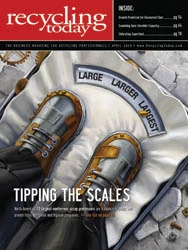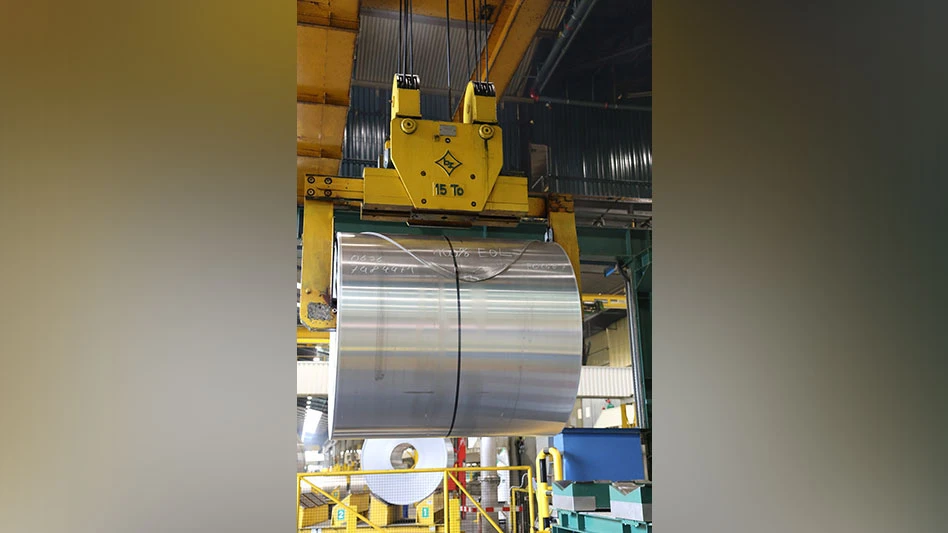Rules are rules, but, in the years leading up to this decade, recyclers often felt victimized by how the rules of Superfund cleanup funding were written.
Recyclers got a new set of rules at the end of 1999 when then-President Bill Clinton signed the Superfund Recycling Equity Act (SREA). SREA was designed to protect recyclers who had acted in good faith. Before SREA, scrap recyclers were held liable for shipments to consuming mills or smelters or to landfills for shredder fluff—even if these shipments were legal and in compliance at the time of the shipment. But if a smelter site or landfill later was declared a Superfund cleanup site, the recyclers often were cited as “partially responsible parties” (PRPs). The potential costs were enormous.
The Institute of Scrap Recycling Industries Inc. (ISRI) was the key group that successfully helped get SREA passed so recyclers were protected from certain Environmental Protection Agency (EPA) procedures and actions.
“SREA has been very helpful in protecting many recyclers,” says Scott Horne of Washington, D.C.-based ISRI. Having such legislation in place is likely to prove valuable in light of statements emanating from the EPA regarding scrutinizing Superfund cleanup procedures.
TAKING A LOOK
The specific protections offered by SREA may come into play as the EPA revisits where Superfund stands as of 2010. In a news release issued Dec. 30, 2009, the agency states, “EPA has identified the following additional classes of facilities that require further study in order for the agency to decide whether to develop proposed regulations: waste management and remediation services, wood product manufacturing, fabricated metal product manufacturing, electronics and electrical equipment manufacturing and facilities engaged in the recycling of materials containing CERCLA (Comprehensive Environmental Response, Compensation and Liability Act, commonly known as Superfund) hazardous substances.”
With the waste management and recycling sectors mentioned by name, companies that process and ship secondary commodities may wonder to what extent they are part of the EPA’s “study group.”
The EPA statement notes that EPA has identified three other industry sectors as ones in which to begin the regulatory development process for any necessary financial assurance requirements. (Those three sectors are the chemical manufacturing industry; the petroleum and coal products manufacturing industry, which primarily includes refineries and not coal mines; and the electric power generation, transmission and distribution industry.) The goal, says the EPA, is to “help reduce the need for federal taxpayers to fund the cleanup of environmental releases.”
Dave Ryan of the EPA says SREA exempts from CERCLA liability “certain persons who arranged for recycling of recyclable materials, including people who arranged for disposal or treatment of a hazardous substance or those who transported a hazardous substance to a disposal or treatment facility.”
The exemption has been carved out to exempt recyclers who acted in good faith to be freed from liability.
ISRI’s Horne says the exemption is a just one and that little has changed with the logic ISRI advanced more than a decade ago in support of the action that eventually produced SREA. “It simply levels the playing field between recyclers and producers of virgin materials,” Horne says. Today, he says the 1999 act was more than justified. Many lawmakers both in the House and in the Senate agreed that recyclers needed some kind of relief from the Superfund provisions.
“I’d be offended that anyone would say otherwise,” Horne says, adding that the strong belief in Congress in 1999 that recyclers needed help was reflected in the number of co-sponsors that the SREA bill had and the relative ease with which it was passed into law.
| Part of the Program |
|
The Institute of Scrap Recycling Industries Inc. (ISRI), Washington, D.C., offers on an ongoing Web-based program to help its member companies stay in compliance with provisions of the Superfund Recycling Equity Act (SREA). On its Web site, ISRI notes that SREA “protects scrap processors from liability if their consumers’ facilities become a Superfund site; however, SREA requires recyclers to take certain actions [including] conducting due diligence on the environmental compliance” of consuming facilities. ISRI adds, “To get the SREA exemption, you must show, among other things, that you have inquired as to whether your customer is in compliance with applicable environmental laws. Taking reasonable care will help protect your business from Superfund liability.” ISRI’s SREA Reasonable Care Compliance Program offers information from URS Corp., New York, which maintains what ISRI calls “one of the largest regulatory environmental databases in the nation.” SREA reports can be individually processed by URS after ISRI member companies log in through the www.isri.org Web site to access the ISRI member-only ordering system. More information on the program is available at www.isri.org.
|
One case that opened the lawmakers’ eyes and helped to drive the legislation was an instance where thorium was found in a waste site. The original manufacturer was not available to pay the fines or for legal action, so the authorities went after a scrap dealer. “Scrap was being blamed for what the virgin materials did,” Horne maintains.
“As a result,” he continues, “there were many members of Congress who believed they had to level the playing field. There is no reason to believe that recyclers have acted irresponsibly either before or after SREA,” Horne maintains.
To the extent that SREA has encouraged parties to recycle hazardous substances, it is positive for the environment, Ryan says.
It should be noted that the provisions of SREA do not excuse recyclers from running their businesses in a responsible manner. ISRI’s Horne says, “Recyclers still have to follow all the regulations on their own property.”
Horne adds, “There is nothing that I’ve even heard that any change in SREA was being contemplated,”
EPA says the identification of the three primary industry sectors was done as part of its efforts under Section 108(b) of CERCLA to examine if financial assurance requirements will help promote better environmental outcomes. The action announced Dec. 30, EPA states, is not a proposed rule or a final regulation.
STAYING IN PLACE
To determine whether a party falls within SREA and whether the company is in compliance with the provisions, EPA personnel will review how a party recycles hazardous substances.
This review includes the examination of the size of the shipping containers, the nature of any hazardous substances in the containers that hold or constitute the recycled materials; the nature of the transaction, including prices paid; the extent of contamination at the site; the impact of the recycled materials at the site based on their relative toxicity, mobility and persistence; the compliance of the party; the other activities associated with the recycled materials; and the satisfaction of all other requirements in CERCLA Section 127.
Government agencies do review policies and procedures, with this activity often prompted by a change in presidential administrations. Ryan states that he is unaware of any activity to change SREA.
“EPA also considers applicable provisions of other statutes and regulations, such as the Resource Conservation and Recovery Act (RCRA) or the Toxic Substance Control Act (TSCA), and related regulations,” Ryan says.
The EPA on its Web site says, “Ecological risk assessment is an integral part of the Remedial Investigation and Feasibility Study (RI/FS) process, which is designed to support risk management decision-making for Superfund sites.”
EPA documents explain that the RI component of the process characterizes the nature and extent of contamination at a hazardous waste site and estimates risks to human health and the environment posed by contaminants at the site. The FS component of the process develops and evaluates remedial options. Thus, ecological risk assessment is fundamental to the RI and ecological considerations are also part of the FS process.
The three parts of the RI are:
(1) Characterization of the nature
and extent of contamination;
(2) Ecological risk assessment; and
(3) Human health risk assessment.
To reach this goal, EPA has what it terms a “Framework” document. It describes the basic elements of a process for scientifically evaluating the adverse effects of stressors on ecosystems and components of ecosystems. It describes the basic process and principles to be used in ecological risk assessments conducted for the EPA; provides operational definitions for terms used in ecological risk assessments; and outlines basic principles around which program-specific guidelines for ecological risk assessment should be organized.
EPA says the goal of the ecological risk assessment in the Superfund Program is to provide the risk information necessary to assist risk managers at Superfund sites in making informed decisions regarding substances designated as hazardous under CERCLA (40 CFR 302.4).
One regulation issued by U.S. EPA’s Superfund Program is the National Oil and Hazardous Substances Pollution Contingency Plan (NCP). The NCP calls for the identification and mitigation of environmental impacts. EPA spells these out as including, but not limited to, toxicity, bioaccumulation, death, reproductive impairment, growth impairment and loss of critical habitat at hazardous waste sites. NCP mandates the selection of remedial actions to protect the environment.
In addition, numerous other federal and state laws and regulations concerning environmental protection can be designated under Superfund as “applicable” or “relevant and appropriate” requirements (ARARs) for particular sites. Compliance with these laws and regulations generally requires an evaluation of site-related ecological effects and the measures necessary to mitigate those effects, EPA says.
The EPA says it recognizes the need for speed. “The risk assessment process must be structured to ensure that site management decisions can be made without the need for repeated studies or delays,” the EPA notes.

Explore the April 2010 Issue
Check out more from this issue and find your next story to read.
Latest from Recycling Today
- Green Cubes unveils forklift battery line
- Rebar association points to trade turmoil
- LumiCup offers single-use plastic alternative
- European project yields recycled-content ABS
- ICM to host colocated events in Shanghai
- Astera runs into NIMBY concerns in Colorado
- ReMA opposes European efforts seeking export restrictions for recyclables
- Fresh Perspective: Raj Bagaria






